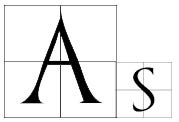The Fall of Königsberg
As Germany faced total defeat in 1945, the besieged city of Königsberg would make its last stand.
 As the Red Army began its advance towards Berlin at the beginning of 1945, it was clear that Germany’s war effort was approaching its final days. It would be in the east that Hitler’s plans of conquest would ultimately be defeated, with the Eastern Front accounting for by far the most vicious and bloodiest combat of the Second World War. Earlier in the war, Germany’s fortunes in the east had looked very different. By late 1941, German troops were approaching the gates of Moscow and Hitler’s hope of a speedy conquest in Eastern Europe was looking increasingly likely.
As the Red Army began its advance towards Berlin at the beginning of 1945, it was clear that Germany’s war effort was approaching its final days. It would be in the east that Hitler’s plans of conquest would ultimately be defeated, with the Eastern Front accounting for by far the most vicious and bloodiest combat of the Second World War. Earlier in the war, Germany’s fortunes in the east had looked very different. By late 1941, German troops were approaching the gates of Moscow and Hitler’s hope of a speedy conquest in Eastern Europe was looking increasingly likely.
However, it was not to be and by 1943 the Allies could see that Germany’s days were numbered — with the Red Army now on the offensive and the Wehrmacht suffering irreplaceable losses. In late 1944, Soviet forces had advanced through Poland and as 1945 arrived, the final assault on Germany was to begin. To bring the war to a close Stalin ordered the Red Army to secure the flanks of the Berlin Axis, which would then facilitate a final assault on Berlin. The need to control the Baltic coastline would bring the Soviet Union into the heart of East Prussia — and towards the fortress city of Königsberg.
